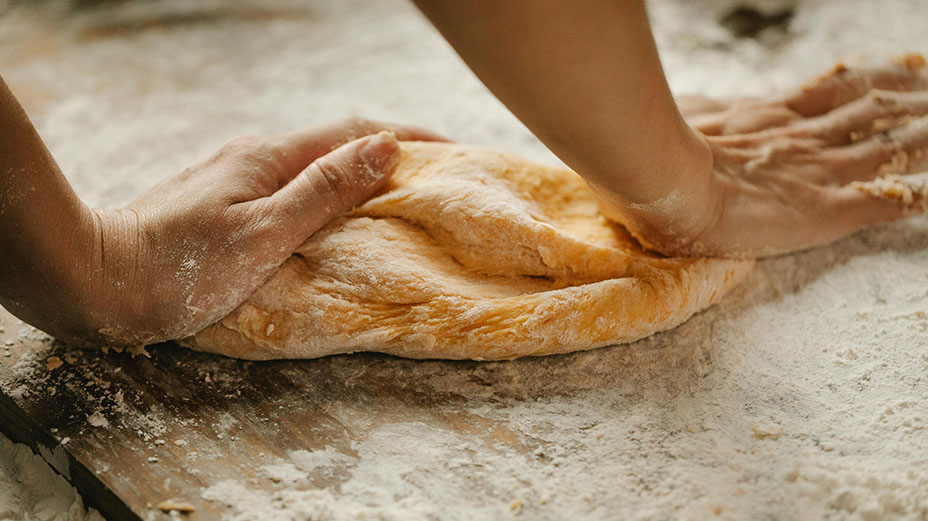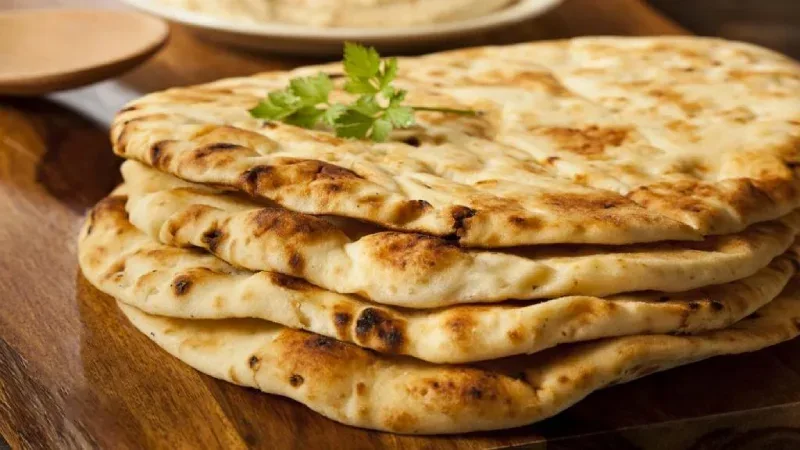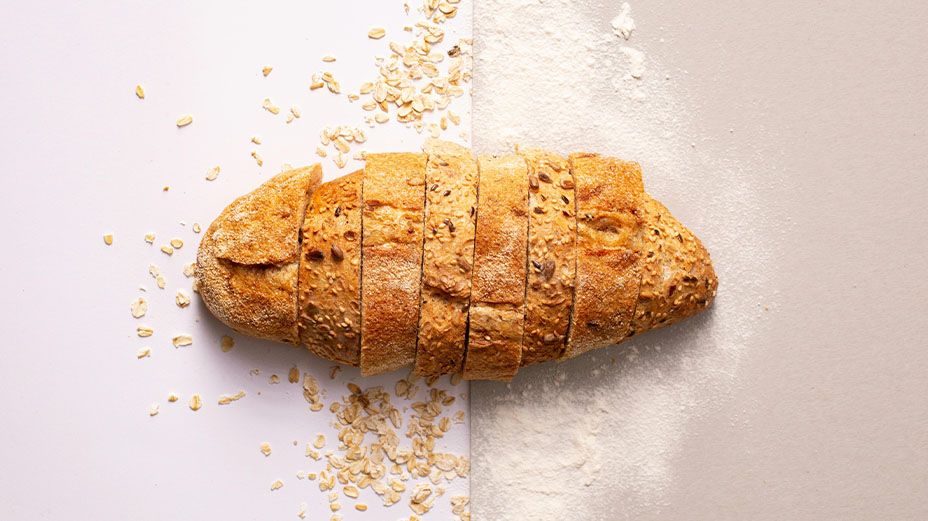We describe the introduction of types of flour and their use in full in this content. Flour was one of the first natural materials that humans used to cook and produce food. Preparation of flour became an important but easy task over time, and with the help of animals and water power, humans began to grind grains and produce flour. The use of flour to prepare bread and sweets is so intertwined with people’s lives that one cannot neglect it and spend a day without it. Baking bread at home became very popular even during the outbreak of the Corona virus, but not everyone was successful in doing so. Many people did not have enough knowledge about this work and this caused many to fail. Knowing the types of flour, properties and preparation steps of each will help to avoid repeating the bitter experiences of the past. This article introduces the types of flour available in the market; So reading it will make you a novice but successful baker.
Read more: Tufton flour and lavash

Introduction of types of wheat flour
In most parts of the world, wheat is the first choice for flour production, and for this reason, there is a great variety in its production process, which puts different flours on the market. Each type of wheat flour is used to produce special bread and sweets.
Bakery flour: It has a high bran content and has a white color and a mild taste. Due to its high gluten content, this flour is suitable for baking bulky and fancy breads such as cakes, pastries, cookies and bulky breads. This type of flour is not suitable for baking traditional breads such as sangak bread and lavash bread.
Wholemeal flour: less bran removal than bakery flour and therefore has a light brown color. Cereal flour helps digestion due to its high fiber content. Due to its moderate gluten, this type of flour is recommended for baking bulky and puffy breads such as French bread.
Whole wheat flour: It has very little bran and therefore has a dark brown color and a strong taste. Due to its high fiber content, this flour is good for health and is also suitable for baking traditional breads such as sangak bread and lavash bread.
Do Safar flour: it has medium bran and for this reason it has a creamy color and a mild taste, and it is usually the best and first choice for baking bulky and puffy breads such as French bread and cakes and pastries.
Three-zero flour: This type of flour is similar to two-zero flour in terms of delicacy and softness, but due to having more bran, it has a creamy color and a mild taste. Like Do Safar flour, it is mostly used in baking sweets and cakes.
Read more: Nol flour 1

Introducing types of bakery flour
Upon hearing the word introduction of types of flour, the first thing that comes to mind is bread. Because there are different types of flour that can be used to bake bread. The most common type of flour for baking bread is wheat flour, however, wheat flour is not the only flour that can be used for baking bread. The type of flour you use to bake bread affects the taste, texture and appearance of the bread. When choosing flour for baking bread, it is important to consider the recipe as well as your personal taste and needs.
Types of rye flour: This flour is prepared from rye grain, which is a type of cereal, and has a strong and slightly spicy taste. This flour is mostly used to prepare rye bread.
Corn flour: It is made from corn seeds and has a mild and slightly sweet taste. Chile’s cornbread is the most popular.
Rice flour: It is made from rice grains and has a mild and slightly nutty taste. It is used for baking all kinds of bread and sweets. In the north of Iran, delicious foods are also cooked with it.
Barley flour: It is made from barley seeds and has an earthy and slightly nutritious taste. The benefits of bread baked with this flour are many, and it is also used in the diets of diabetic patients.
The difference between two zero and three zero flour
After bread, the most used flour is in the confectionery industry; Of course, the products used in this industry have differences with similar examples in the bakery industry.
Two zero flour
The most famous of them is Do Safar flour. This flour, also known as fancy flour or white flour, is a type of soft flour made from wheat.
This flour loses most of its bran and wheat germ in a process called braning, and for this reason, it has a white color and a mild taste. Due to its low gluten and high starch, Do Safar flour is suitable for baking large and fancy breads such as cakes, cookies, cookies, large breads and pizza. Also, du Safar flour, due to its puffiness, gives a soft and delicate texture to bread and sweets; Unlike plain wheat flour that is used in baking traditional breads.
Three types of flour
In addition to this two zero flour, there is another type called three zero. This flour is also known as “Nol” in baking. Three zero flour is similar to two zero flour in terms of delicacy and softness, but due to having more bran, it has a creamy color and a milder taste.
This flour is in powder form and is easily sifted. Both types of flour are used for cakes, sweets, cookies, large breads, pizza, baklava and all kinds of halva.
Read more: Ard Nol 2
What is gluten?
Gluten is classified in the group of proteins and is found in wheat, barley and rye grains. This material causes the bread to become crispy and the dough to stretch during the kneading process. The amount of gluten in flour depends on the type of wheat, its milling and braning process. In general, wheat flours with more bran removal have less gluten.
Gluten gives both bread and sweets elasticity and chewiness. Low-gluten flours are more suitable for baking flat and flat breads, such as lavash bread. High-gluten flours are more suitable for baking bulky and fluffy breads such as French bread.
Although this type of protein plays a role in increasing the nutritional value of bread and sweets; But it is not suitable for all groups of society. People with celiac disease are highly allergic to this protein. For this reason, the presence of this substance must be mentioned on the flour packages. The approximate amount of gluten in some types of flour is as follows:
Bakery wheat flour: 10 to 13 percent
Star flour (double zero flour): 8 to 10 percent
Cereal flour: 8 to 12 percent
Whole wheat flour: 13 to 15 percent
Rye flour: 10 to 12 percent
Barley flour: 4 to 6 percent
Corn flour: 0.4 to 0.6 percent
Rice flour: 0.2 to 0.3 percent
What is the best flour for baking bread?
Choosing the right type of flour depends on the type of bread and the taste of each person and society, and it is selective to a large extent, and people get used to consuming a certain type of bread over time; However, the characteristics of the ingredients and dietary restrictions are also important for many people.
If you are looking for fluffy and voluminous breads, use high-gluten flours such as baker’s flour and whole wheat flour.
If you’re looking for flat breads, use low-gluten flours such as wholemeal and oat flour.
If you are looking for breads with a strong flavor and aroma, use whole wheat and whole wheat flours.
Of course, baking delicious and healthy bread does not depend only on flour. In addition to the type of flour, other factors such as the quality of water, yeast and the skill of the baker also affect the quality of bread. Besides, it is very important to use professional tools and precise tools for measurement. In bread baking recipes, the correct size of the ingredients is very important, as well as the freshness and quality of the flour.
Using professional ovens and accurate temperature measurement is another important point that must be taken into consideration. Baking bread may seem simple at first glance, but like any other work, it has its own details and problems that do not make everyone a baker.
Read more: Stone flour
What are the details of preparing different types of flour?
The quality of flour plays the first role in baking bread and sweets. The quality of flour, like all cooking ingredients, depends on many factors. Some can be checked with confidence, but the checking of some of them is also related to the work experience of people.
Freshness: The types of flour that we use in our daily life will spoil over time. It is important to use fresh flour for best results. Examining this case of industrial and packaged flours is a very simple task because they have a production date




